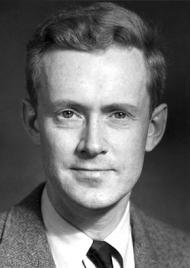Franz Josef Land was presumably discovered by a Norwegian sealing vessel led by Nils Fredrik Rønnbeck and Johan Petter Aidijärvi in 1865. The first expedition to announce their finding was the Austro-Hungarian North Pole Expedition in 1872, who named the archipelago in honor of Franz Joseph I. The islands were visited by a series of later expeditions, the first being led by Benjamin Leigh Smith in 1880, which along with the first expeditions contributed to exploring the southern and central parts of the archipelago. The next were two concurrent expeditions in 1896, the Nansen's Fram expedition and the Jackson–Harmsworth Expedition, which met by accident. These journeys contributed to the exploring of the northern and flank sides of Franz Josef Land.
The next series of expeditions used the archipelago as a base while trying to reach the North Pole, the first attempt carried out by Walter Wellman in 1898. The following year an expedition on Stella Polare visited the archipelago, and from 1901 to 1905 the Ziegler Polar Expedition took place. Although unsuccessful at reaching their ultimate goal, and often poorly organized, these expeditions contributed to further exploration of the islands. Russian expeditions, starting with the icebreaker Yrmark in 1901, began frequenting the islands. In addition to exploration, these conducted an increasing amount of scientific research. Russia claimed sovereignty over the achipelago in 1914, and the Soviet Union formally annexed the islands on 15 April 1926, making it part of Arkhangelsk Oblast. Norway and Italy protested, and Norwegian sealers continued to operate in the waters for several years. A Norwegian attempt to establish a base in 1929 failed.
The 1930 Bratvaag Expedition was the last Western European presence on the islands until 1990, except for an undetected German weather station on Alexandra Land during the Second World War. From 1932 the Soviet Union established weather station at Tikhaya Bay and Rudolf Island. The 1930s saw the development of complete topographical maps and the islands used as the starting points for drifting ice stations. During the Cold War the islands became strategically important and an aerodrome was constructed at Nagurskoye and Heiss Island. Ernst Krenkel Observatory was established in 1957. From 1991 foreign scientists were again welcome to the islands, which were declared a nature reserve in 1994. Tourism commenced and the archipelago became part of Russian Arctic National Park in 2011.
The Austro-Hungarian North Pole Expedition
The Austro-Hungarian North Pole Expedition was an expedition that ran from 1872–74 and discovered Franz-Josef Land. According to Julius von Payer, one of the leaders, its purpose was to find the north-east passage. It actually explored the area northwest of Novaya Zemlya. According to the other leader, Karl Weyprecht, the North Pole was a secondary target. The estimated total costs of 175,000 florins were financed by Austro-Hungarian nobles. The two main financial contributors were Count Johann Nepomuk Wilczek (1837–1922) and Hungarian Count Ödön Zichy (1811–1894)
The main ship was the Tegetthoff, named for the Austrian Admiral Wilhelm von Tegetthoff, under whom Weyprecht served. The ship was built by Teklenborg & Beurmann in Bremerhaven. It was a three-masted schooner of 220 tons, 38.34 m long, with a 100 horsepower (75 kW) steam engine. The crew came from all over Austria-Hungary, especially from Istria and Dalmatia.
Journey
The Tegetthoff with her crew of 24 left Tromsø in July 1872. At the end of August she got locked in pack ice north of Novaya Zemlya and drifted to hitherto unknown polar regions. While drifting, the explorers discovered an archipelago which they named Franz-Josef Land after Austro-Hungarian Emperor Franz Joseph I.
In May 1874 boat captain Weyprecht decided to abandon the ice-locked ship and try to return by sledges and boats. On 14 August 1874 the expedition reached the open sea, and on 3 September finally set foot on Russian mainland.
The expedition returned to Austria by train from Bremen. On the journey they were invited to dinner parties hosted by different German geographical societies. They entered Vienna in triumph, welcomed, according to contemporary newspaper reports, by hundreds of thousands of people.
Significance
The expedition's discoveries and experiences made a significant contribution to polar science, especially the discovery of the Northeast passage by Adolf Erik Nordenskiöld. They also gave an impetus to International Polar Years, meaning a shift from sports-like races of single expeditions to worldwide scientific cooperation in exploring the polar regions.
The expedition yielded various results in the fields of meteorology, astronomy, geodesy, magnetism, zoology, and sightings of Aurora Borealis. They were published by the Academy of Sciences in 1878. There is a book (The Austro-Hungarian North Pole Expedition 1872-74) and paintings by Payer - probably the only paintings of a polar expedition created by the explorer himself.
The expedition was selected as the main motif for the Austrian Admiral Tegetthoff Ship and The Polar Expedition commemorative coin minted on June 8, 2005. The reverse side of the coin shows two explorers in Arctic gear with the frozen ship behind them.

